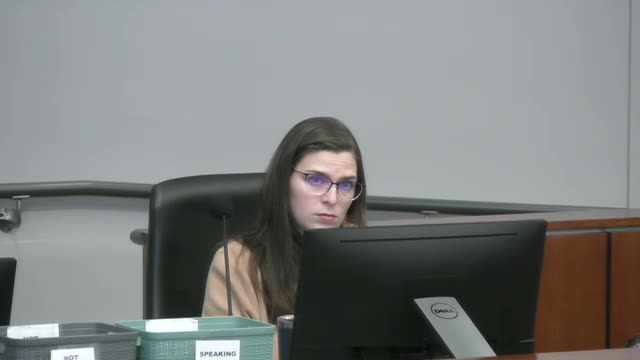Flower Mound officials deny heliport permit amid resident noise concerns
February 10, 2025 | Flower Mound, Denton County, Texas
This article was created by AI summarizing key points discussed. AI makes mistakes, so for full details and context, please refer to the video of the full meeting. Please report any errors so we can fix them. Report an error »

In a recent Planning and Zoning meeting held on February 10, 2025, in Flower Mound, Texas, significant concerns were raised regarding a proposed heliport that has sparked considerable opposition from local residents. The discussions highlighted the potential noise pollution and safety risks associated with the project, which many believe are incompatible with the surrounding residential area.
Commissioners expressed strong reservations about the noise levels generated by helicopters, noting that the maximum residential standard is 52 decibels, while helicopters can produce noise levels exceeding 80 decibels during takeoff and landing. This discrepancy raised alarms among officials, who emphasized that the proposed heliport's proximity to homes would severely impact residents' quality of life. One commissioner pointed out that the overwhelming feedback from the community, including a petition signed by 80 residents, indicated a clear opposition to the project.
The meeting also touched on the appropriateness of the heliport's location. Several commissioners argued that the small size of the proposed site—only seven acres—combined with its closeness to residential properties, made it an unsuitable choice. They suggested that alternative locations, such as Arrow Valley, which is just seven miles away, could better accommodate such a facility without disturbing local residents.
Safety concerns were also a focal point of the discussion. Commissioners highlighted the risks associated with flying near power lines and the potential for accidents, which could pose significant dangers to both residents and pilots. The sentiment among the commissioners was that the proposed heliport would primarily benefit a single property owner rather than the broader community, raising questions about its overall value to Flower Mound.
As the meeting concluded, it was made clear that the final decision regarding the heliport would rest with the town council, following the commission's recommendation. The discussions underscored the importance of community input in local governance and the need for careful consideration of how new developments can affect existing neighborhoods. The outcome of this proposal will likely set a precedent for future developments in the area, making the stakes particularly high for both residents and officials alike.
Commissioners expressed strong reservations about the noise levels generated by helicopters, noting that the maximum residential standard is 52 decibels, while helicopters can produce noise levels exceeding 80 decibels during takeoff and landing. This discrepancy raised alarms among officials, who emphasized that the proposed heliport's proximity to homes would severely impact residents' quality of life. One commissioner pointed out that the overwhelming feedback from the community, including a petition signed by 80 residents, indicated a clear opposition to the project.
The meeting also touched on the appropriateness of the heliport's location. Several commissioners argued that the small size of the proposed site—only seven acres—combined with its closeness to residential properties, made it an unsuitable choice. They suggested that alternative locations, such as Arrow Valley, which is just seven miles away, could better accommodate such a facility without disturbing local residents.
Safety concerns were also a focal point of the discussion. Commissioners highlighted the risks associated with flying near power lines and the potential for accidents, which could pose significant dangers to both residents and pilots. The sentiment among the commissioners was that the proposed heliport would primarily benefit a single property owner rather than the broader community, raising questions about its overall value to Flower Mound.
As the meeting concluded, it was made clear that the final decision regarding the heliport would rest with the town council, following the commission's recommendation. The discussions underscored the importance of community input in local governance and the need for careful consideration of how new developments can affect existing neighborhoods. The outcome of this proposal will likely set a precedent for future developments in the area, making the stakes particularly high for both residents and officials alike.
View full meeting
This article is based on a recent meeting—watch the full video and explore the complete transcript for deeper insights into the discussion.
View full meeting
